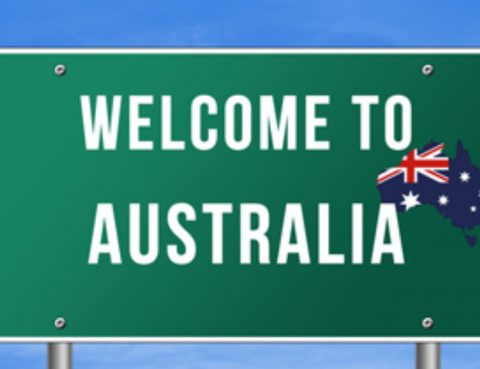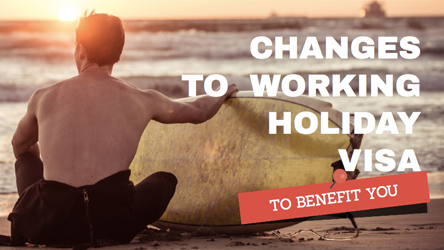From 1 July 2016, all student visa applications must be made online. Here’s some information to assist with preparing your application.
- Use the Document Checklist Tool on our website to see what types of documents you will need to provide with your application.
- Make sure you have access to a scanner as you will need to provide certified copies of documents. There is information available to help you prepare your application.
- We encourage you to complete your health examinations before lodging your visa application using My Health Declarations. You will need a current passport and must know which visa subclass you are applying for (Student 500 or Student Guardian 590). If you complete your health examinations after you have lodged your application, you could delay the processing of your application.
- Once you have started your application you can save it at any time. You don’t have to complete your application in one sitting.
- Evidence of enrolment:
- If you are outside Australia, you must include your Confirmation of Enrolment (CoE) number in your visa application (unless you are a secondary exchange student or a foreign affairs or defence sponsored student).
- If you are applying in Australia you can include details of a CoE or attach a letter of offer. If you provide details of a CoE in your application, you must not attach or provide details of a Letter of Offer for the same course. Note: Only select ‘Yes’ to the question ‘Other evidence of intended study’ if you do not have a CoE.
- Make sure you know the details of your health insurance before you start your application – even if your provider has arranged this for you. You will need to enter the start and end date of your policy. Your policy must have started by the time you intend to arrive in Australia, generally at least a week before your course commencement date. If your policy starts on the same day as your course commences, we will ask you to obtain extra cover that starts when you intend to arrive in Australia. If you enter Australia without Overseas Student Health Cover (OSHC), you will be in breach of your visa conditions. Your OSHC should finish when you want to leave Australia. A visa won’t be granted for longer than your OSHC.
- Prepare a statement about why you want to study in Australia, in English, at Genuine Temporary Entrant. There is a maximum limit of 2000 words but the statement does not need to be this long.
- You might consider telling us about:
-
- why you have chosen your course and provider
- if the qualification you gain will help you find employment or improve your salary outside of Australia
- your incentives to return home, including ties to your home country
- any gaps in study or work history.
- You can also attach evidence to support your statement with your application, including evidence of employment or qualifications.
- Before lodging your application, make sure all questions are complete and any relevant documents that are included in the checklist are attached. Incomplete applications may result in delays or visa refusal. If you need to provide additional documents after lodging your application, do this through ImmiAccount. Do not email or courier documents to the Department as this may delay processing of your application.
Tips to avoid common mistakes in the application form
- Read the help text in the visa application form.
- Only select ‘Yes’ to the question ‘Is the applicant applying for this visa due to the closure of their education provider?’ if your education provider in Australia has closed or is in default due to a sanction imposed on them. You will have been notified if your provider is in default.
- Only select ‘Yes’ to the question ‘Is the applicant receiving partial or full funding under a training scheme approved by the Commonwealth Government of Australia’ if you have been advised by your provider that you are sponsored by the Commonwealth.
- Answer the questions about your citizenship and passport carefully to make sure correct information has been provided, otherwise your application could be delayed.
Remember to lodge your application as soon as you can. Complete applications are more likely to be processed quicker. While we aim to process most applications within one month, some applications will take longer. If you have to contact the Department about your application please use our student visa enquiry form.
Feel free to contact Best Migration Services to help you with your student visa.
SKILLED MIGRANTS NEED A STANDOUT LINKEDIN PROFILE IN AUSTRALIA
Linkedin is the leading business networking website worldwide. There are over 6 million members in Australia with 4 out of 5 professionals with a Linkedin profile. Australia has one of the highest memberships of Linkedin in the world. The biggest benefit is the ability to make connections. It’s an important tool for actively networking online and getting seen by potential employers.
Linkedin is not a jobs board but companies are now advertising positions there. The prime function of Linkedin is to network and make connections. You can find people who from your profession, industry and former colleagues and friends. Job advertisements often appear first on Linkedin and some companies are asking candidates to apply directly for jobs using only their LinkedIn profile.
In the future I predict that resumes will not be in use anymore and people will just use linked profiles for job hiring. This is already happening with some job applications.
At every step of the job search and application process you need to stand out from the competition. An excellent Linkedin profile makes a big difference. Australia is a big country with a relatively small population (over 23 million people) and this makes the job market very competitive.
When I was coaching Sara a chemical engineer from Hong Kong we worked on approaching the right people in suitable companies on Linkedin. We prepared professional emails marketing her skills and asking permission to connect. Sara sent her email to specific people in target companies. She landed a great job using this method with a company that interviewed her alone when a position became available. I have helped other migrants use the same approach to get great results.
I discovered the full story when I was contacted by her new boss. He told me he was very impressed with her approach and her Linkedin profile which really stood out. He contacted me to recreate his Linkedin profile for business purposes. He told me that though he had no job available when Sara contacted him he kept her information and as soon as suitable position came up he interviewed only her. He knew from her resume and Linkedin profile that she had all of the right skills and she was a great fit for their company.
Linkedin is vital to your job search. A stand out professional profile makes a big difference and can get you hired.
Source: https://www.tribuslingua.com.au/
Work and Holiday visas changed on 19 November 2016 as part of the Government’s commitment in the 2015 White Paper on Developing Northern Australia.
If you’re a Work and Holiday (Subclass 462) visa holder, you now have the opportunity to get a second 12-month visa. This applies if you work for three months in the tourism and hospitality or agriculture, forestry, and fishing industries in northern Australia while on your first visa. This new opportunity encourages Work and Holiday visa holders to spend time living and working in Australia’s north.
The change will only apply to specified work undertaken from 19 November 2016 in northern Australia, which broadly includes all of the Northern Territory and those parts of Western Australia and Queensland above the Tropic of Capricorn.
All specified work has to be paid work in accordance with Australia’s workplace laws. If you’re considering applying, you’ll need to provide evidence of this payment. There are 16 countries that have active Work and Holiday visa arrangements with Australia, including the United States, Chile, Indonesia and China. The Work and Holiday visa programme continues to grow, and the Government continues to negotiate additional Work and Holiday visa arrangements with new partner countries.
Visit www.border.gov.au/Trav/Visa to learn more.
The Professional Year in Accounting
The Skilled Migration Internship Program: Accounting (SMIPA) is a professional year program approved by the Department of Immigration and Border Protection (DIBP), available to overseas students who have an Australian accounting degree qualification as a result of at least two years’ study in Australia.
The SMIPA program has been co-developed by the Institute, CPA Australia (CPAA) and the Institute of Public Accountants (IPA) and is delivered by registered providers who have been jointly approved by all three professional accounting bodies.
About the Professional Year Program
- a minimum of 44 weeks’ training, including a 12-week internship placement with a relevant host company
- professional development and practical hands-on learning, with an emphasis on workplace preparation: Culture, ethics and expectations
- recognition as a pathway for 485 graduate visa holders seeking permanent residency under general skilled migration (GSM)
Learning Objectives
- Work within Australian legislative requirements applicable to workplaces and operations
- Work safely and participate in occupational safety, health and environment (OSHE) processes
- Work effectively within the organisation’s requirements
- Communicate effectively in the workplace
- Participate in a team
- Provide effective client service
- Apply occupation-specific knowledge and skills to professional work situations
- Implement strategies to manage their personal career development
Enquiries
To learn more check out the following website- www.immi.gov.au/skilled/general-skilled-migration/professional-year.htm
Or further information at- www.cpaaustralia.com.au/become-a-cpa/migration-assessment/smipa.
Dennis is a Kenyan IT professional Skilled Migrant in Australia. Like many new skilled migrants in Australia, he was experiencing panic and desperation. Money was running out and he feared that he and his family would be homeless despite the fact that he was a highly qualified IT professional with two Masters degrees and over eight years of work experience.
Dennis had had over thirty interviews, was making second round interviews but never made it to a job offer.
He was pretty down as he thought he was failing. After a while, he realised that he should not be thinking in terms of failure.
He started to see things differently, what did he need to do to get a job? The answer was right there…PREPARE MORE.
Dennis had another interview the following day. He went through the organisations website to see what he knew about them. It was clear he did not know enough about the organisation he was hoping would hire him.
If you meet a client for a business meeting you try and learn as much about them as possible. Yet when you are interviewing most people think a 30 minute review of the company website is enough.
What will separate you from your competition at an interview is a deeper understanding of the company who may hire you. What you need to know is their business drivers, competitors, what projects they have running now and their overall strategy and mission. The majority of this can be googled or found through research. Take the time to learn more and stand out from the crowd at interview.
In order to be successful in the interview, it was essential for Dennis to lift his mood and not carry the energy of the past into his new interview. He had to let it go so that he could succeed. Being present is an essential part of succeeding at interview.
A few days later, he got the job!
Please feel free to contact BMS professional team to help you migrate to Australia and follow your dreams.
Source: https://www.tribuslingua.com.au/
Leonard is an accountant from Malaysia with a background in auditing as well as accounting. As a natural planner Leonard knew that his best chance of success in Australia was preparing before he left Malaysia.
The first job offer Leonard got was as a bookkeeper in Sydney, he turned this offer down. All of his friends and family were telling him he was crazy and that he should take any job to get started. But Leonard knew something; he knew that if he stayed present, calm and focused on what he really wanted he would get his ideal job.
Leonard’s biggest struggle was that he would get very nervous for interviews. He felt he was not doing his best at interviews and had missed great job opportunities he really wanted in the past.
The first step to overcome his nerves was in-depth interview preparation. This gave him confidence.
When his first interview came he spent a lot of time focusing on how he could deal with his nerves by being himself. Bringing out his authentic nature and engaging with the interviewers was key to winning the job he wanted.
He had a series of interviews and each time he improved his ability to deal with his nerves by focusing on being himself and being present in the interview.
When the dream job interview came with a major bank as a portfolio accountant Leonard was more than ready. The morning of the interview he had prepared a pre-interview relaxing ritual to get himself centred.
Leonard felt very happy in the interview that he was being true to himself. His instincts were right; during the interview the panel of interviewers called in the senior manager to speak with him. A couple of days later he was offered the job.
His attitude and positivity stood out as well as his planning, preparation and an understanding that he deserved his dream job. Leonard is a testament to the fact that the right attitude, willingness to do the work and learn about yourself can result in achieving your dream job in Australia.
Please contact BMS professional team to help you migrate to Australia to start your dream life.
Source of the story: https://www.tribuslingua.com.au







